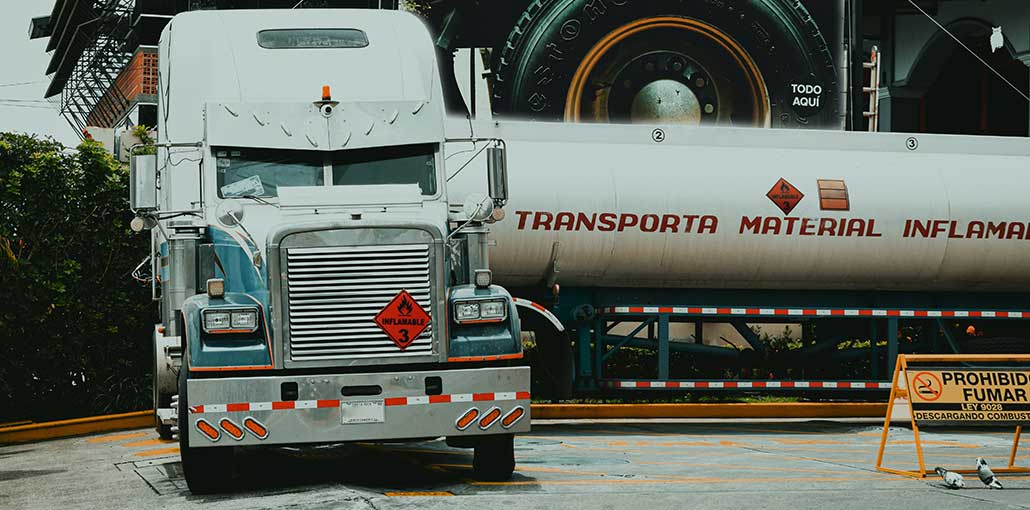A hazardous material is any chemical or substance that has properties that can cause damage to people, the environment, and property if they are not handled correctly during transport.
Their transport is carefully regulated in legislation and there are strict rules and regulations on how hazardous materials can be transported by road, rail, air, and sea. The rules cover both dispatch, reception, and the transport itself.
Many might initially think that this refers to bio-waste or radioactive materials, but even products like aerosol cans and nail polish are considered hazardous. As they pose a risk, the transportation demands a high level of training and attention to detail.
Below, we look at the best tips for transporting hazardous materials while ensuring safety and minimizing risk.
Classify the Material
When you are about to ship hazardous materials, a Product Safety Data Sheet (SDS) is provided to the one who is to handle the hazardous materials. SDSs are a standard element of hazardous cargo transportation and suppliers of chemicals are required by law to provide the transporters with an up-to-date SDS which tells how the products should be handled.
Each Safety Data Sheet must provide information such as the properties of each chemical transported, the hazards they carry, and guidance on PPE, spill clean-up procedures, and first aid. Once a product is classified, it must be labeled accurately and clearly in line with hazardous cargo classifications.
Also read: 7 Best Practices to Improve OTR Transportation
Consider Mobile Secondary Containment
When transporting hazardous materials, you should consider mobile secondary containment units which are ideal for spill prevention and in cases where quick response emergency spill containment is needed.
Secondary spill prevention is necessary for whoever uses, stores, or transports hazardous materials ranging from oil to hydraulic fluid. If the container or storage unit used to hold a harmful substance fails to work properly, secondary containment units can help to lessen the negative impact that the discharge of those harmful substances would have on staff or the environment.
Packaging
Different types of hazardous materials require specific packaging standards to be met. Packaging must usually be certified and tested to meet travel requirements, and this is especially important when hazardous materials are transported by air. It must be constructed and closed in a way that will prevent any possible loss of contents according to specifications provided by the manufacturer.
Any type of packaging that might differ from the manufacturer’s instruction could compromise the integrity of the material in question and even violate the law. For instance, some hazardous materials must be stored in drums, and the liquid dictates whether these drums are made of steel, plastic, or aluminum.
Appropriate Transportation Method
Hazardous materials must be packed in a way that will pose no threat during their transportation and that will ensure that the materials arrive at their final destination in good conditions. These materials are very sensitive to changes in temperature, condensation, humidity, and moisture. For this reason, their shipping containers must be airtight.
For instance, there are four different types of hazardous material waste, that is, listed, characteristic, universal, and mixed. Each of them requires specific container types and the most common ones used are plastic or metal open and closed top drums and IBC containers. When hazardous materials are combined with regular cargo during transportation, they must be placed within easy access to ensure swift removal in case of an emergency.
Availability of PPE
The employer’s main responsibility when hazardous materials are being transported is to provide personal protective equipment to all employees and ensure they properly use it. PPE helps employees stay healthy and safe, despite exposure to hazardous materials, and their main purpose is to prevent harm if accidents happen.
There are many kinds of PPE available to safely handle hazardous transportation, and it includes everything from respirators, face shields, footwear, and chemical-resistant glasses to full-body hazmat suits. Any organization that uses PPE should explain PPE’s proper usage so that it can be used to supplement higher-level control measures.
Also read: How to Shipping Heavy Items, Machinery and Other Industrial Equipment
Keeping Clean
When handling hazardous materials, no room for error is allowed. OSHA regulations specify that where hazardous materials are handled, all passages and isles must be kept clear, in good shape, and with no obstructions that could cause damage or harm. Liquids should be stored in stable containers that are secure against sliding or collapse.
In addition, all areas and PPE must be kept free from the accumulation of materials that have fire, tripping, explosion, or pest harborage habits.
Conclusion
If you’re someone who ships hazardous materials, it’s your responsibility to know how to communicate their hazards appropriately and minimize any risks. These tips will give you some insight into how to safely handle the transportation of hazardous materials and ensure the safe delivery of hazmat freight










Leave a comment